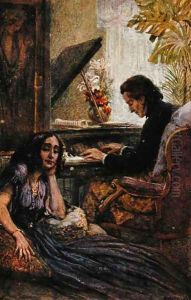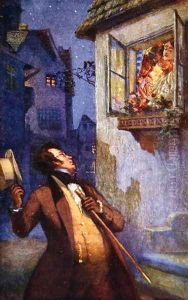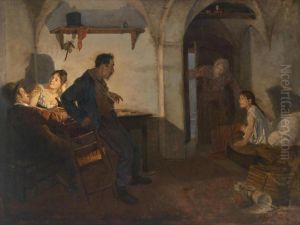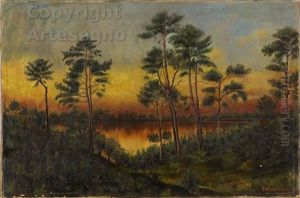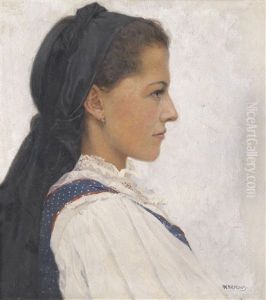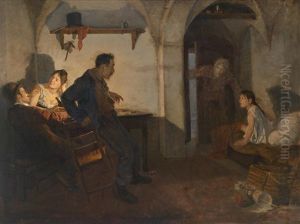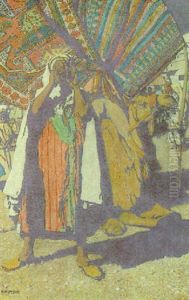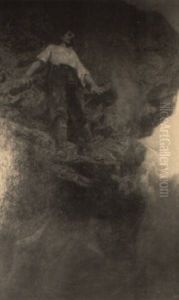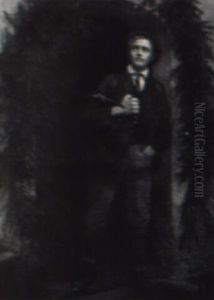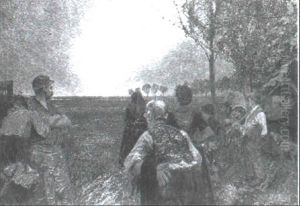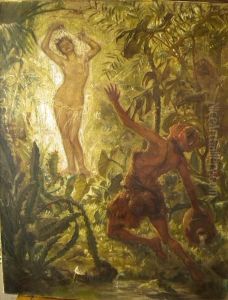Adolf Karpellus Paintings
Adolf Karpellus was an Austrian artist and illustrator, born in 1865 and passing away in 1919. His life spanned a period of significant change and turmoil in Europe, marked by the Austro-Hungarian Empire's complexities and the subsequent turmoil of World War I. Karpellus is most renowned for his contributions to the field of illustration, particularly in the context of books and periodicals. Although not as widely known as some of his contemporaries, his work reflects the rich artistic traditions of Central Europe during the late 19th and early 20th centuries, blending elements of Art Nouveau with the emerging modernist sensibilities of his time.
Karpellus trained in Vienna, a city that was a hub for artistic innovation and intellectual discourse during his lifetime. Vienna's cultural vibrancy, shaped by figures like Gustav Klimt and Egon Schiele, undoubtedly influenced his artistic development. He worked extensively as an illustrator, contributing to various publications and projects. His illustrations often featured intricate details and a keen sense of composition, qualities that made his work both aesthetically pleasing and narratively compelling.
Throughout his career, Karpellus engaged with a variety of themes, ranging from historical and mythological subjects to scenes of contemporary life. His ability to adapt his style to suit different narratives and audiences underscored his versatility as an artist. Despite the challenges posed by the political and social upheavals of his time, Karpellus remained committed to his art, leaving behind a body of work that, though perhaps not as celebrated as that of some of his peers, offers valuable insights into the visual culture of his era.
Adolf Karpellus's contribution to the field of illustration and the arts during a transformative period in European history is noteworthy. His illustrations not only adorned the pages of books and magazines but also served to document and interpret the world around him, capturing the essence of a society in transition. His death in 1919 came just after the end of World War I, a conflict that dramatically reshaped Europe's political landscape. Karpellus's legacy, though modest in comparison to more famous artists of his time, is preserved in the collections of those who appreciate the nuanced and often overlooked corners of art history.
